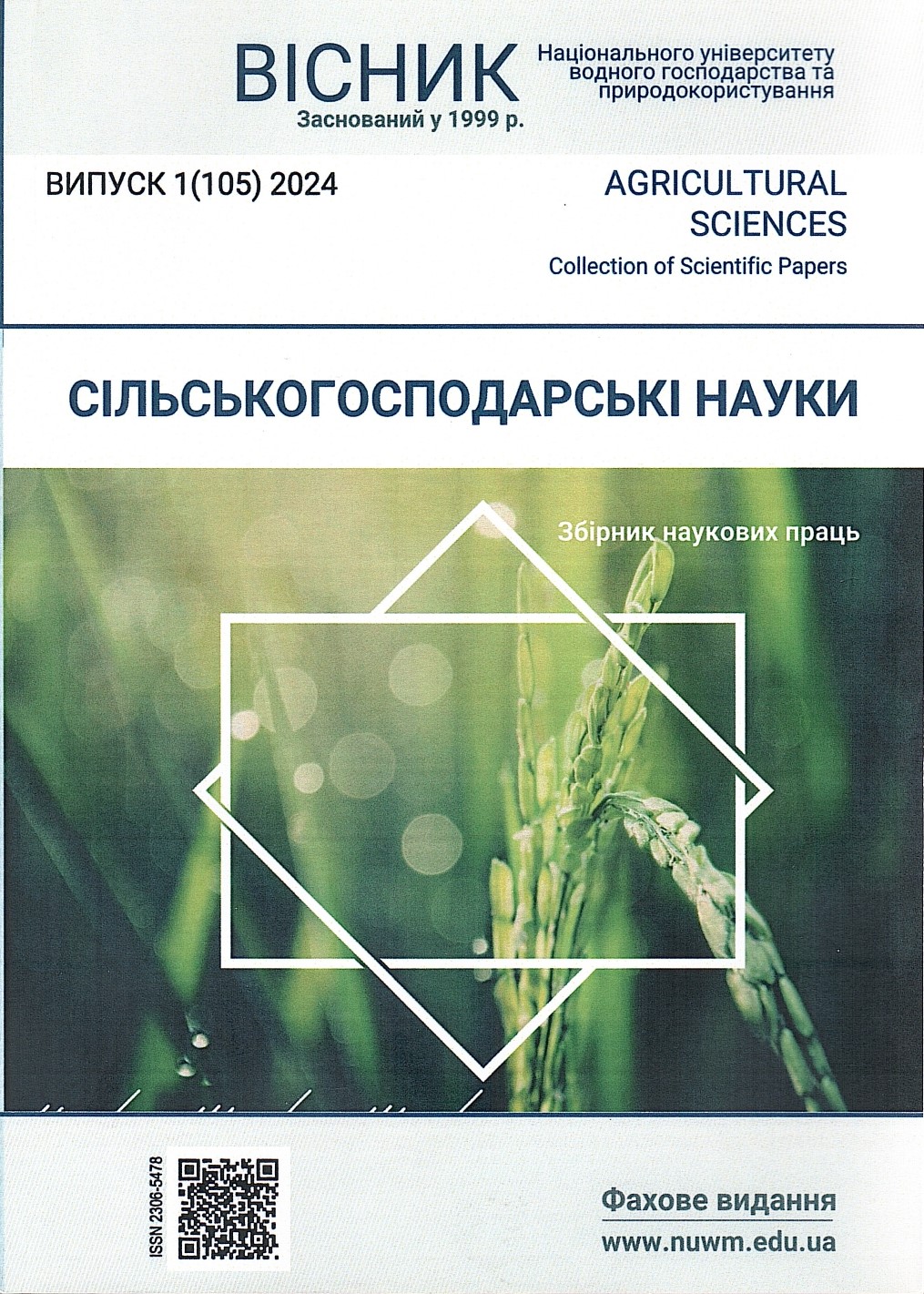PHYTOSANITARY MONITORING OF APPLE PLANTATIONS OF THE WESTERN FOREST STEPPE OF UKRAINE
DOI:
https://doi.org/10.31713/vs120245Keywords:
apple tree, phytosanitary monitoring, pests, diseasesAbstract
The peculiarities of the number, harmfulness, distribution, development of pests and diseases of apple trees in 2016–2020 in the conditions of the Western Forest Steppe of Ukraine were studied. Research has established that the most widespread pest in the conditions of this region in 2016–2020 was the apple borer (the flight intensity of the first-generation butterfly reached 8.4 specimens/pheromone trap, and the second-generation butterfly – up to 6.5 specimens/pheromone trap). Additionally, the economic thresholds of harmfulness were exceeded by the green apple aphid (up to 22.9 colonies/100 leaves), leafrollers (up to 7.4% damage), apple leaf miners (up to 2.5 nests/tree), and mites (up to 450.8 larvae/100 leaves). In 2016–2020, the economic thresholds of harmfulness in the "bud swelling" phenophase were exceeded by the overwintering stages of leafrollers (1.1–1.5 egg masses/2 m), mites (1000–2212.4 eggs/2 m of 1–3 year branches), and green apple aphid (25–38.1 eggs/100 leaves), which subsequently increased in number. In the "green tip" and "bud development" phenophases, "bud separation," except for the gray bud weevil (18.3–4.2 specimens/tree), Neocoenorrhinus pauxillus (34.3–45.7 copies/tree) and apple flower borer (27.2–51.4 copies/tree), significant distribution and harmfulness of other pests were not noted. In the "pink bud" phenophase, the economic thresholds of harmfulness exceeded: green apple aphid (5.1–7.3 colonies/100 flower rosettes) and blossom feeder (15.8–20.7 copies/tree). During the flowering of the apple tree, the economic thresholds of harmfulness was exceeded by the apple flower-eater (18.3–47.5 copies/tree), сodling moth (1.8–2.6 copies/pheromone trap), leafrollers (3.7–6.1 caterpillars/100 flower rosettes), leaf-mining moths (18.4–57.5 min/100 leaves) and hairy moth (16.4–27.2 specimens/tree). The end of flowering was characterized by an increase in the number of apple moths (1.1–1.5 nests/tree), green apple aphids (8.4–16.6 colonies/100 leaves), blossom feeder (13.3–33.7 copies/ tree). During fruit growth (a fruit the size of a hazel nut), the number of green (15.1–22.9 colonies/100 leaves) and gray (6.5–9.1 colonies/100 leaves) apple aphids, leafhoppers (3.8– 6.3% of damage) and apple borer (4.3–8.4 specimens/pheromone trap). During the growth of the fruit, when the fruit was the size of a walnut, economic thresholds of harmfulness exceeded apple moth (1.1–2.5 nests/tree), green apple aphid (13.2–18.4 colonies/100 leaves), leafrollers (3.4–7.4% of damage) and apple borer (3.5–6.5 specimens/pheromone trap). In the 2nd–3rd decade of July, the following were exceeded by leafrollers (5.5–6.8% damage) and apple fruit-eater (4.5–6.1 specimens/pheromone trap), in the "fruit ripening" phenophase – apple fruit borer (3.5–5.7 copies/pheromone trap) and leafhoppers (4.8–6.0% damage). Among the diseases, apple orchards were most affected by scab and powdery mildew. As a result of the research, the spread and development of powdery mildew was noted (from 1.1–3.1% in the "pink bud" phenophase to 7.3–15.3% in the "fruit growth" phenophase). The prevalence of moniliosis was observed in the "fruit growth" phenophase, when the fruit was the size of a walnut (2.2–6.2%) and increased during the apple tree vegetation to 4.5–9.8% in the "fruit ripening" phenophase. Fruit rot affected from 3.7–5.8% of apple fruits in the "fruit growth" phenophase (fruit the size of a walnut) and up to 8.2–12.2% of fruits during their ripening. The spread and development of scab was noted during the period of fruit formation (1.3–2.2%). During fruit growth, the spread of scab increased (up to 8.1–11.8% of affected leaves). During fruit ripening, apple scab became more widespread (up to 28% of affected leaves and up to 15% of affected fruits).Downloads
Published
2024-05-31
Issue
Section
Articles

